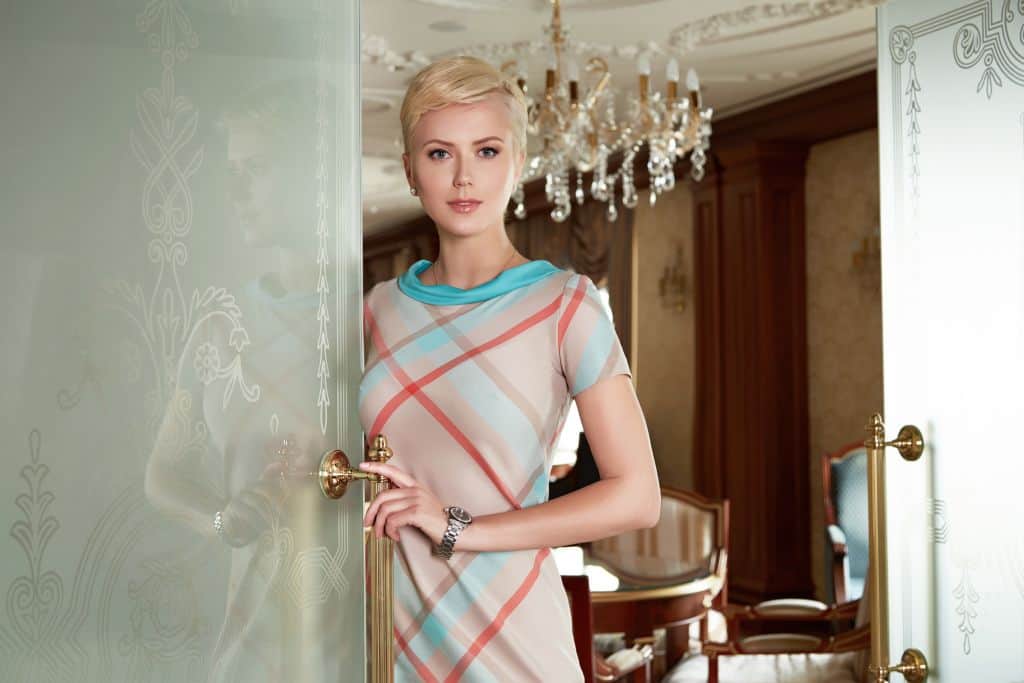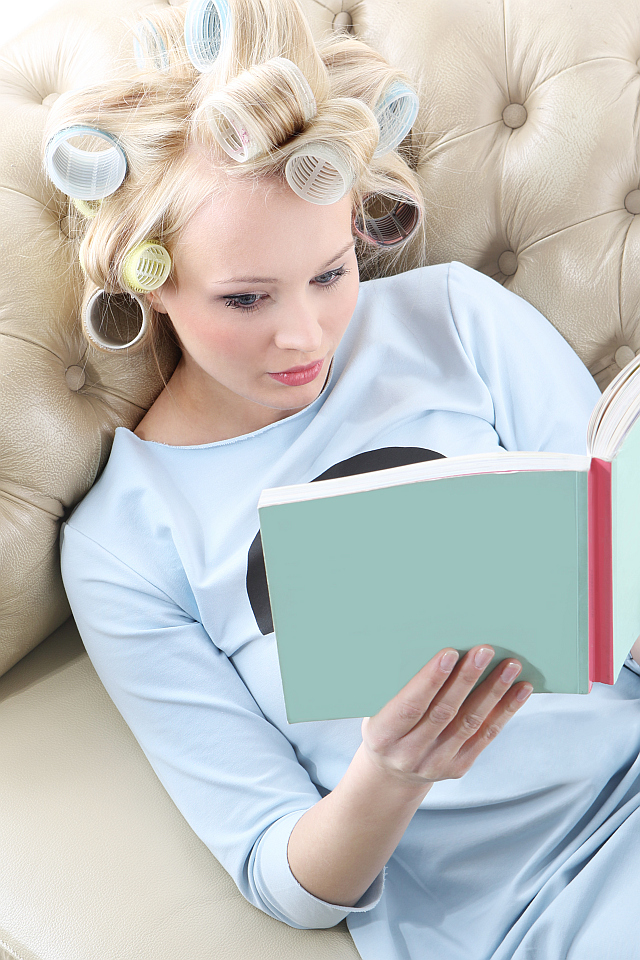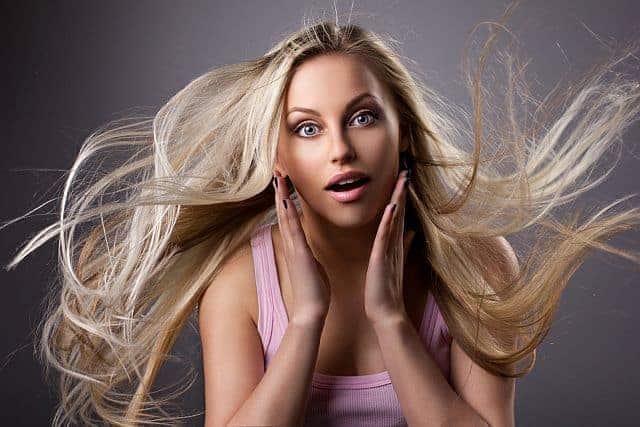What Are Velcro Rollers?
Velcro rollers are making comeback, and there are a number of reasons why. These hair styling tools give volume and lift to flat, lifeless hair in a matter of minutes. They’re heatless, self-gripping, and don’t necessarily require other accessories to secure them in place.
The rollers are made from plastic and have a Velcro exterior with enough grip to easily adhere to and wrap hair. However, Velcro rollers are not only for curling your hair. Small Velcro rollers naturally allow tight curls. But larger rollers can create volume and bounce in flat, straight, or fine hair in addition to allowing for looser, bouncier curls and waves.
With a set of Velcro curlers, you can get voluminous, bouncy blowouts without ever needing a salon. Better yet, you can take them with you anywhere.

Do Velcro Rollers Damage Hair?
By using velcro curlers, you can reduce the use of heat-styling appliances that are known to dry out and damage your hair. However, Velcro rollers are not completely safe for your hair, especially if you use them all the time. Many users, especially those with long or coiled hair, complain that their hair was damaged due to using velcro rollers. The most common problems associated with the use of Velcro rollers are split ends, the appearance of frizz, and hair breakage.
Velcro curlers do not have a smooth surface like magnetic curlers. Rather, they have tiny bristle-like hooks meant to secure them in place. Super-textured hair can easily catch in the roller as a result, which leads to frizz and—in more severe cases—hair breakage. If you have 3C or 4C hair, you may need to smooth it with a hot brush before applying Velcro rollers.
How to Minimize Damage when Using Velcro Rollers
Fine hair is more susceptible to breakage, so individuals with fine hair types should be very careful when using Velcro curlers. To minimize the possibility of tangles, brush your hair before rolling.
Always put the correct amount of hair on the roller. The sections of the hair at the base should be no larger than the roller itself. Too much hair can cause strands to get caught during removal.
Unless your hair is short, use a Velcro roller with a diameter greater than 1 inch. The larger the roller you use, the less trouble you will have when unraveling your hair. This greatly minimizes the chance of damage.
If you use a blow dryer, wait for the rollers to cool down before taking them out.
Although Velcro rollers are described as self-gripping, it’s almost always better to secure them in place with clips. Unsecured Velcro rollers can move and touch surrounding rollers, causing hair strands to catch and tangle.
Regularly blow-drying your hair while it’s wrapped in Velcro rollers can result in dryness and heat damage. To avoid this, first, let your hair air dry about 80% of the way, and always use a heat protectant. Then put the rollers in your hair and apply heat with a blow-dryer so the tools can do their work.
If using a blow dryer, wait for the rollers to cool before taking them out.

Do Velcro Rollers Work on Fine Hair?
Velcro rollers produce wonderful results with fine hair giving the lift and volume that fine hair needs most. However, you must be gentle when placing and removing the rollers. It’s critically important to perform each step correctly. Fine hair is delicate and prone to breakage, and you should avoid any pulling that may lead to damage or breakage. Always use large-sized rollers on fine hair, as larger sizes will minimize any chance of getting hair stuck in the roller.
How to Correctly Use Velcro Rollers
Velcro rollers can be used on both wet and dry hair. You need to apply a styling mousse with heat-protective properties to make your hair more pliable while preventing heat damage. First, air or rough-dry your hair until it is about 80% done.
Next, use a hot air brush to heat and finish drying the chosen section of hair before lightly wrapping it around the curler. Start from the ends and rotate the roller toward your roots. If you have long hair, you will need to secure rollers with a clip or bobby pins, as longer hair puts more weight on them.
If your goal is to get more volume, spray a root lifter or other volumizing product over your rolled hair. Then use a hair dryer with a diffuser to apply more heat and make the curling process more effective.
When using rollers on dry hair, you can heat each section with a flat iron or hot brush. You’ll need to roll the sections up while they’re still hot, as you can only change the shape of your hair and add lift with heat.
If your goal is maximum volume, use larger curlers. Just as the larger barrel of a curling iron gives looser curls, the same is the case with curlers. Curlers often come in sets of different sizes, so you can choose which one to use depending on your desired hairstyle. By combining different sizes, you get more dimensions and more natural loose curls.
Finally, leave the rollers in for 10 to 30 minutes before removal.
It’s important to wait until your hair cools completely before removing the rollers. Removing curlers from hot hair can spoil the results.
How to Put Velcro Rollers on Fine Hair
Fine hair isn’t ideal for the self-gripping aspect of Velcro curlers, as they can fall out easily. To secure the curler, you’ll need to use hair clips.
Don’t overuse the blow dryer. Apply only as much heat as necessary to manipulate your hair and create more volume and lift.
To get the max volume, lift the hair high before wrapping it, roll the section of hair back down, and fix the rollers closest to the roots of the section you work on. Also, roll the hair away from your face in face-framing areas.
Use your fingers to comb and style your hair. Using a brush can leave fine hair flatter.

How to Remove Velcro Rollers?
The best protection against hair damage is to learn how to put the rollers on and take them off properly.
To remove the curlers, gently and slowly unroll them one by one without pulling or tugging. Make sure the curler does not catch your hair, which can be painful and may lead to damage.
Another method is to unroll the curler only far enough to grip your hair at the roots and slide it down instead of unrolling.
Once the rollers are out you can use a paddle brush to smooth strands or do finger styling to get a more natural look while leaving volume untouched. Finish with a hair spray to hold the style you’ve obtained.
Can You Sleep in Velcro Rollers?
Velcro curlers are more likely to damage your hair if left in overnight. Movement while asleep will cause friction and tangles. Additionally, sleeping with Velcro curlers is less comfortable than with foam options. These problems can worsen with fine hair that needs more gentle handling. Therefore, it’s better to use these hair styling devices for twenty minutes before removing them gently.
To Summarize: How to Safely Use Velcro Rollers for Fine Hair and any other Hair Type?
Divide your hair into sections and use a good volumizing mousse and heat protectant.
Use 1-inch rollers or wider so you can take them out effortlessly.
Wrap amounts of hair that don’t exceed the size of the roller, wrap lightly, and secure the rollers in place with hair pins.
Remove the roller gently and avoid tugging or pulling your hair.
Allow your hair to air dry enough (80%) then place the rollers and use a blow dryer after wrapping.
If your hair is fine or thinning, you shouldn’t use Velcro curlers regularly.
Finally, never, ever sleep in Velcro rollers.























































